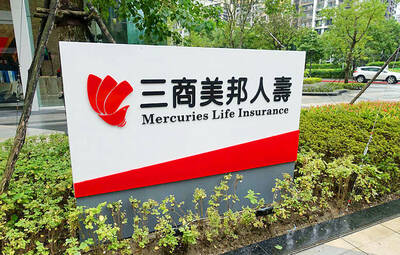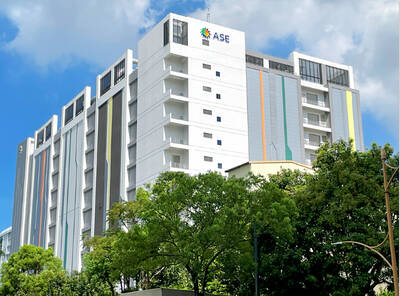With an eye on the fast-growing demand for Internet access using smaller mobile gadgets, Intel Corp unveiled its latest mobile Internet device (MID) platform — Moorestown — in Taipei yesterday.
The Intel “Moorestown” platform is scheduled for commercial release next year or in 2010, the world’s biggest chipmaker said in a statement on its Web site yesterday.
Intel is on track to reduce Moorestown’s idle power by more than 10 times, compared with the first-generation MIDs based on Intel’s Atom processor, Anand Chandrasekher, a senior vice president and general manager of Intel’s Ultra Mobility Group, said in a statement.
“As the next billion people connect to and experience the Internet, significant opportunities lie in the power of technology and the development of purpose-built devices that deliver more targeted computing needs and experiences,” said Chandrasekher in his keynote speech at the Intel Development Forum in Taiwan yesterday.
Chandrasekher said that Moorestown would be a catalyst for exciting and innovative developments that would extend the full Internet experience into the smartphone space with the communication MID.
Moorestown platforms will support a range of wireless technologies, including 3G, WiMAX, WiFi, GPS, Bluetooth and mobile TV, he said.
By 2015, shipments of MIDs enabling fast Internet access are expected to grow to 15 billion units, Intel said.
Intel said yesterday it was collaborating with Swedish telecom equipment maker Ericsson AB for high-seed high-speed packet access (HSPA), or 3.5G, embedded data modules optimized for the Moorestown platform, making HSPA as one of its wireless technologies.
“We see great potential in embedding mobile broadband in MIDs, creating new markets in the industry. We are very excited to work with Intel to bring together the telecom and computing industries and extend the mobile broadband ecosystem,” said Johan Wibergh, senior vice president and head of Ericsson’s Business Unit Networks, in an e-mail statement.
At least half of 200 million notebook computers on the market would be outfitted with embedded HSPA mobile broadband modules by 2011, said Mats Norin, vice president of Ericsson’s Product Area Mobile Broadband modules, without specifying his market source.
HSPA demand will expand along with the pickup in mobile broadband growth in emerging markets and rising replacement demand in mature countries, Norin said, while showcasing an MID made by Taiwan’s Compal Electronics Inc (仁寶) on his palm.
Ericsson projected that about 100 million consumer electronics devices would be equipped with built-in HSPA modules within five years.
Ericsson is also in talks with a couple of Taiwanese MID makers, which makes a big portion of electronics used around the globe, to use its HSPA mobile broadband modules in their products.
Ericsson declined to give the names of those Taiwanese companies. A lot of local electronics makers, including BenQ Corp (明基), see MID as the main driver for the next wave of growth.
Ericsson currently supplies its mobile broadband modules to Dell Inc, the world’s second-largest PC maker; China’s Lenovo Group (聯想), South Korea’s LG Electronics Inc and Japan’s Toshiba Corp.

AI BOOST: Although Taiwan’s reliance on Chinese rare earth elements is limited, it could face indirect impacts from supply issues and price volatility, an economist said DBS Bank Ltd (星展銀行) has sharply raised its forecast for Taiwan’s economic growth this year to 5.6 percent, citing stronger-than-expected exports and investment linked to artificial intelligence (AI), as it said that the current momentum could peak soon. The acceleration of the global AI race has fueled a surge in Taiwan’s AI-related capital spending and exports of information and communications technology (ICT) products, which have been key drivers of growth this year. “We have revised our GDP forecast for Taiwan upward to 5.6 percent from 4 percent, an upgrade that mainly reflects stronger-than-expected AI-related exports and investment in the third

Mercuries Life Insurance Co (三商美邦人壽) shares surged to a seven-month high this week after local media reported that E.Sun Financial Holding Co (玉山金控) had outbid CTBC Financial Holding Co (中信金控) in the financially strained insurer’s ongoing sale process. Shares of the mid-sized life insurer climbed 5.8 percent this week to NT$6.72, extending a nearly 18 percent rally over the past month, as investors bet on the likelihood of an impending takeover. The final round of bidding closed on Thursday, marking a critical step in the 32-year-old insurer’s search for a buyer after years of struggling to meet capital adequacy requirements. Local media reports

TECHNOLOGICAL RIVALRY: The artificial intelligence chip competition among multiple players would likely intensify over the next two years, a Quanta official said Quanta Computer Inc (廣達), which makes servers and laptops on a contract basis, yesterday said its shipments of artificial intelligence (AI) servers powered by Nvidia Corp’s GB300 chips have increased steadily since last month, should surpass those of the GB200 models this quarter. The production of GB300 servers has gone much more smoothly than that of the GB200, with shipments projected to increase sharply next month, Quanta executive vice president Mike Yang (楊麒令) said on the sidelines of a technology forum in Taipei. While orders for GB200 servers gradually decrease, the production transition between the two server models has been

ASE Technology Holding Co (日月光投控), the world’s largest integrated circuit (IC) packaging and testing supplier, yesterday announced a strategic collaboration with Analog Devices Inc (ADI), coupled with the signing of a binding memorandum of understanding. Under the agreement, ASE intends to purchase 100 percent shares of Analog Devices Sdn Bhd and acquire its manufacturing facility in Penang, Malaysia, a press release showed. The ADI Penang facility is located in the prime industrial hub of Bayan Lepas, with an area of over 680,000 square feet, it said. In addition, the two sides intend to enter into a long-term supply agreement for ASE to